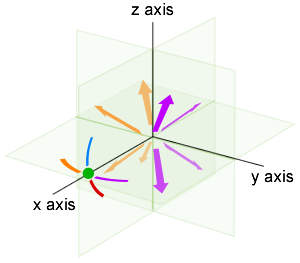

Impulse Navigation

Impulse navigation occurs at subluminal speeds up to a maximum of 0.2C (one-fifth the speed of light). This navigation mode is where encounters with other vessels are most likely and where most tactical operations will occur.
Impulse Maneuvering
A maneuver is a set of actions that change the position and/or heading of the vessel at impulse speeds (heading changes are not possible at superluminal speeds).
Heading
Heading changes are acheived by magnetically gimballing main engine output, which applies thrust at an angle to the current direction of travel and causes the vessel to change direction. This is an extremely efficient way of altering heading given the vessel’s mass and momentum.
Speed
Drive mode applies thrust to accelerate the vessel to a desired speed - this is referred to as Drive Mode. Once this is reached thrust is reduced, with momentum maintaining the vessel’s speed along a constant heading - this is referred to as Cruise Mode.
If the vessel needs to be slowed or stopped, then reverse thrust must be applied using plasma divertors and forward-facing impulse thrusters which counteract the vessel’s forward momentum.
Navigational Bearings
Navigational bearings describe the direction of an object relative to the vessel and thereby the vessel's orientation to that object.
Orientation is a critical factor for a number of operational areas. For example it describes which parts of the vessel are vulnerable to incoming fire, which of the vessel’s own weapons can be brought to bear against an object or which sensor systems are aligned to scan an object.
Vessel Orientation
 Vessel orientation determines where other objects are positioned relative to the vessel’s current heading. This is an important consideration for a number of operational areas as it indicates which parts of the vessel are facing an object. This determines which parts of the vessel are vulnerable to incoming fire, which of the vessel’s own weapons can be brought to bear against an object or which sensor systems are aligned to scan an object, for example.
Vessel orientation determines where other objects are positioned relative to the vessel’s current heading. This is an important consideration for a number of operational areas as it indicates which parts of the vessel are facing an object. This determines which parts of the vessel are vulnerable to incoming fire, which of the vessel’s own weapons can be brought to bear against an object or which sensor systems are aligned to scan an object, for example.
Standard nautical terminology is used when describing orientation. For example port bow describes the forward left area of the vessel, while starboard quarter describes the aft (rear) right area. Dorsal describes upper areas of the vessel while ventral describes lower areas.








